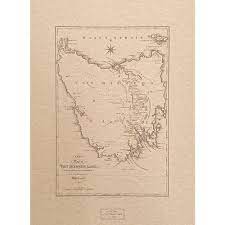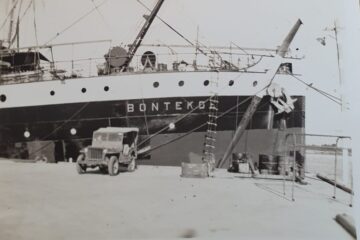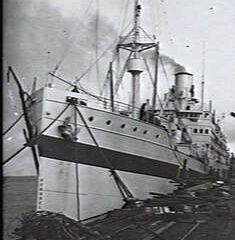- Arnhem Land – a region in the Northern Territory named after the Dutch ship Arnhem, which explored the area in 1623.
- Batavia Coast in Western Australia is named after the Dutch East India Company ship Batavia.
- Beverley – a town in Western Australia. The town was originally named “Nuyts” in 1838 after Pieter Nuyts, who was a Dutch explorer that visited the area in 1627. The town was renamed “Beverley” in 1868 after the English county of the same name.
- The suburb of Booragoon in Perth, Western Australia, was named after the Dutch word “boerenkroon,” which means “farmer’s crown” or “farmer’s hat,” because of the shape of the hill in the area. The name was later anglicized to “Booragoon” and it is believed to mean “swampy lake” in the Noongar Aboriginal language, which reflects the local geography of the area.
- Brouwer Rock – a submerged rock off the coast of Western Australia named after Dutch navigator Hendrick Brouwer.
- Cape Grim – a cape in Tasmania named after the Dutch word “Grim” meaning severe or harsh.
- Cape Leeuwin – a headland in Western Australia named after the Dutch ship ‘Leeuwin’ which explored the area in the 17th century.
- De Witt – a small town in Western Australia named after Dutch politician Johan de Witt.
- De Witt Island – an island off the coast of Western Australia named after the Dutch statesman Johan de Witt.
- De Witt Land – a landform in Western Australia named after Dutch politician Johan de Witt.
- Dirk Hartog Island – an island off the coast of Western Australia named after Dutch explorer Dirk Hartog, who landed on the island in 1616 and left an inscribed pewter plate, which is considered the oldest European artifact in Australia.
- Dutchies Beach is actually located in Nelson Bay, New South Wales and is named after a local resident named “Dutchy” who used to fish in the area during the early 20th century.
- Dutchmans Stern Conservation Park – a conservation park in South Australia named after a peak that was named by the Dutch explorer Pieter Nuyts in 1627.
- Duyfken Point – a point in Western Australia named after the Dutch ship Duyfken, which explored the area in 1606.
- Eendracht Peak – a mountain in Western Australia named after the Dutch ship Eendracht, which explored the area in 1616.
- Geelvink Channel – a strait in Western Australia named after the Dutch navigator Hendrik Brouwer’s ship, the Geelvink.
- Goeree Point – a point in Western Australia named after the Dutch island of Goeree-Overflakkee.
- Groote Eylandt – an island in the Gulf of Carpentaria off the coast of Northern Territory, named by Dutch explorer Abel Tasman in 1644 as “Groot Eiland”, meaning “Big Island” in Dutch.
- Heemskerck Shoals – a group of shoals off the coast of Western Australia named after the Dutch explorer Maarten Gerritszoon de Vries’ ship, the Heemskerck.
- Houtman Abrolhos – a group of islands off the coast of Western Australia named after the Dutch navigator and explorer Frederick de Houtman.
- Janszoon Bluff – a bluff on the coast of Western Australia named after Dutch explorer Willem Janszoon.
- Jerramungup – a town in Western Australia named after the Noongar word for “place of the little fish,” which was possibly used by the Dutch explorer Pieter Pieterszoon to describe the region. Pieter Pieterszoon (also known as Pieter Pietersz) was a Dutch explorer who sailed along the coast of Western Australia in 1627. He was the captain of the ship the Gulden Zeepaerdt (Golden Seahorse) and named several features of the coastline, including Cape Leeuwin, Rottnest Island, and the Houtman Abrolhos islands.
- Koombana Bay – a bay in Western Australia named after the Dutch ship Koombana, which was wrecked in the area in 1912.
- Leeuwin-Naturaliste National Park – a national park in Western Australia named after the Dutch ships Leeuwin (“lioness” ) and the French ship Naturaliste, which explored the area in resp.1622 and 1801. The names is in reference to the cape and bay respectively.
- Limmen Bight and Limmen Bight River – a river in the Northern Territory named after the Dutch ship Limmen, which was wrecked in the area in 1644.
- Maatsuyker Island is named after Joan Maetsuycker, the Governor of Zeylan (present-day Sri Lanka) during the Dutch period in Ceylon and later the Governor-General of the Dutch East Indies from 1653 to 1678. The island was named by Dutch explorer Abel Tasman, who named it after Maetsuycker in honor of his service to the Dutch East India Company.
- Nuyts Archipelago – an archipelago off the coast of South Australia named after Dutch navigator Pieter Nuyts.
- Orange is a city located in the Central West region of New South Wales. The city was named by Surveyor General Sir Thomas Mitchell after Prince William of Orange, who later became King William III of England.
- Pieter Nuyts Land – a region of the southern coast of Western Australia named after the Dutch explorer Pieter Nuyts.
- Rembrandt Drive – a street in the suburb of Mermaid Waters in Queensland named after the Dutch painter Rembrandt van Rijn.
- Rotterdam Park and Rotterdam Road City of Port Adelaide Enfield are named after the Dutch city of Rotterdam the second-largest city in the Netherlands.
- Rottnest Island – an island off the coast of Western Australia named after the Dutch word for “rat’s nest,” which was used by the Dutch explorer Willem de Vlamingh to describe the island’s population of quokkas, a small marsupial.
- Schouten Island – an island off the coast of Tasmania. In 1642, while surveying the south-west coast of Tasmania, Abel Tasman named the island after Joost Schouten, a member of the Council of the Dutch East India Company.
- Tasman Bridge – a bridge in Tasmania named after Dutch explorer Abel Tasman.
- Tasman Island – an island off the coast of Tasmania named after Dutch explorer Abel Tasman.
- Tasman National Park – a national park in Tasmania named after Dutch explorer Abel Tasman.
- Tasman Peninsula – a peninsula in Tasmania named after Dutch explorer Abel Tasman who was the first European to explore the area in 1642.
- Tasman Sea – a sea between Australia and New Zealand named after Dutch explorer Abel Tasman.
- Vanderlin Island and Vanderlin Rocks in the Gulf of Carpentaria. In April 1644 Abel Tasman thought the group of islands were part of the mainland and named them Cape Vanderlin, after Cornelis Van der Lyn, a councillor the of Dutch East India Company and Governor-General of the Dutch East Indies, 1645-50. Matthew Flinders in 1802 found Vanderlin to be an island.
- Van Diemen Gulf – a gulf in the Northern Territory named after Dutch Governor-General Anthony van Diemen.
- Vlamingh Head – a headland in Western Australia named after Dutch explorer Willem de Vlamingh.
- Vlamingh Plateau – a submarine plateau off the coast of Western Australia named after Dutch explorer Willem de Vlamingh.
- Wapet Landing – a landing in Western Australia named after the Dutch ship Wapen van Hoorn, which was wrecked in the area in 1727.
- Westeinde – a locality in South Australia, located in the Mid North region, approximately 15 kilometers north of the town of Clare. Named after the Dutch word for “western end”.
- Willemstad – suburb now named ‘Northgate’ in the City of Port Adelaide Enfield, South Australia, which was originally known as Willemstad.
- Wittecarra Creek, believed to be the site of the first permanent landing of Europeans in Australia. In 1629 the Dutch East India trading vessel Batavia was wrecked on the Abrolhos Islands, southwest of Kalbarri. Following the wreck a small group of mutineers massacred 125 of the surviving men, women and children. Whilst most of the ringleaders were executed, two of the conspirators, Wouter Loos and Jan Pelgromm, were landed on the mainland, near the mouth of Wittecarra Creek. Their ultimate fate is unknown.
- Zeehan – a town in Tasmania named after one of Abel Tasman’s two ships the ‘Zeehean (Sea Rooster) to visit Australasia in 1642
- Zeehan Mineral Field – a mineral field in Tasmania.
- Zeewijk – a suburb of Geraldton in Western Australia, named after the Dutch East India Company ship Zeewijk, which was wrecked off the coast in 1727.
- “Zwanenrivier” is the Dutch name for the Swan River in Western Australia, which was named by Dutch explorer Willem de Vlamingh in 1697, who named it “Swarte Swaene-Drift” (Black Swan River) due to the presence of black swans in the area. The name was later anglicised to “Swan River”.
Categories: Dutch – Australian HistoryMaritime History


